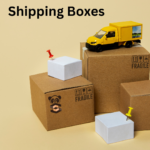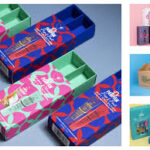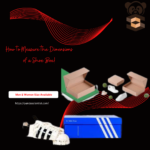A Budget-Friendly Alternative to Rigid Boxes
Alternative to Rigid Boxes – While custom rigid boxes are brilliantly known for excellent protection and a premium presentation of products, they come with several drawbacks. Their fixed shape, high space occupancy, lack of flexibility, and potential environmental impact make them a costly choice. These factors add to the overall expenses, making rigid boxes less than ideal for businesses focused on budget-friendly packaging. In this article, we will explore some great alternatives to rigid boxes that offer the same level of protection and presentation while being more cost-effective.
Why Are Rigid Boxes Expensive? Here’s Why
Material
Superior quality chipboard or heavy paperboard gives rigid boxes, also called set-up boxes, enhanced strength and durability in comparison to cardboard. Decoratively completed with extra paper wrappers around their hard structure, the boxes further evoke their premium appeal. Owing to their strength, excellent physical protective mechanisms, and reusability, they remain a preferred option for packaging luxuries, heavy items that require extra support, or brands that want to increase the perceived value of their products.
Production
They require complex machinery installations and are labor intensive with exacting operations such as wrapping and gluing. The added painstaking craftsmanship will cost them more.
Shipping
Most rigid boxes, unlike foldable packaging, remain in a fixed form, which makes for a larger and more transport-unfriendly package. Since they are non-compressible, they are actually a shipping cost burden as they consume space and have to be shipped on pallets instead of more compact, stackable packages.
Storage
A rigid box, unlike a collapsible box, requires more space for storage, thus contributing to warehousing charges. Due to their static dimensions, they may also leave some extra space unused, which will be an additional charge with respect to the storage costs.
Alternatives #1 – Corrugated Boxes
Corrugated boxes are a great rigid box alternative if product protection is your priority. Made from fluted materials, they offer outstanding cushioning against impacts during shipping. Corrugated boxes are also more cost-effective to manufacture than rigid boxes. But to get the same look, printability, folding ability and quality as a rigid box, consider the following when customizing your corrugated boxes:
Consider micro-flute type like F or N that has a higher number of flutes per foot
Use thinner, lightweight micro-flute types like F or N, which have a higher number of flutes per foot. This results in a smoother surface, increased stiffness and rigidity, and enables more precise folding operations and direct lithographic (offset) printing. If you’re curious about other available flute sizes, be sure to check out our corrugated master guide.
Choose white coated linerboard for the exquisite outer printing surface
On the contrary, it is considered challenging to print on corrugated cardboard because it is brown and porous in nature, thus posing difficulties for printing quality. If the brown kraft liner on the outside surface is needed to be replaced with a smooth, white paper for the primary external prints, then replacing it with the coated white kraft liner would be beneficial. The smooth, white surface reapplies fine printing without spilling ink into the porous material and thus yielding designs printed sharply and clearly.
Use Flexography or Lithographic printing for highest quality print
Flexographic Printing (Direct Printing) is the most popular method used for printing on cardboard boxes. Plates are developed with different designs for each specific color. These plates are then attached to large rotating cylinders that print the designs, one after another—eventually building the complete design. While it has its uses, this type of printing is not recommended for highly intricate designs or photo-quality printing as each color would require a separate plate to be made. But this may work for you if you have a simple design with few colors and a high volume of materials to justify the creation of plates for flexographic printing.
Lithographic Printing (Offset Printing) is done using litho labels instead of printing directly onto the corrugated board. The labels are printed first with the design, which is then applied to the outside of the linerboard. This approach allows for high-quality, photo-realistic images and fine detail with which brands can impart a premium look to their packaging. This type of printing also leaves a smooth, gloss-like finish further enhancing the look of packaging, making it, in fact, a very popular choice for those consumer products that have to attract attention on the shelves.
Apply a protective water-resistant coating to form a moisture barrier
These coated boxes act as a barrier against moisture able to get inside and soak the cardboard surfaces or wash away the ink on it. This is necessary especially for moisture-sensitive products like electronics, foods, or pharmaceuticals.And the coated surface doesn’t wash out or damage any printed designs even in moist conditions. Plus it will extend the shelf life of perishable goods by keeping them dry in transit and storage.
Design die-cut corrugated boxes to precisely fit your product’s dimensions
Your corrugated boxes can be cut and designed specifically for the exact measurements of your products. This way, any empty space around the product is eliminated, thus decreasing any chances of its shifting during the course of transit. Also, with endless options for die cutting customizations, unique shapes and uncommon structures can be created, which are functional and protective as well as have a premium feel. For instance, cut-out handles for easy carrying or see-through windows to give a glimpse of the product inside are both functional and appealing.
Use box inserts or foam to enhance resistance to heavy loads and stacking pressure and maintain the shape of the contents
Custom-made cushioning inserts of either box or foam are one remedy to the issue of cartons being less resistant to heavy loads and piling pressure. They would provide additional strength against these stresses while keeping the shape of the goods. A greener approach would be to use paper-based materials instead of plastics or foam to make the cushioning inserts.Additionally, match insert materials with box materials for cost efficiency. In addition to improving the unboxing experience with the element of surprise and delight for the customer, these additional layers of inserts protect the product from damage during transit.
Alternative #2 – Folding Cartons
Folding cartons offer a cost-effective alternative that can still convey quality and achieve a similar look and feel to rigid boxes. They are tremendously efficient in production, amenable to automated mass production with minimum retooling, and can be shipped flat for economical shipping. To effectively compete with rigid boxes, make use of the design flexibility and premium finishing options folded cartons offer. Keep in mind that folding cartons are made of lighter materials and have a more delicate build, so do take your product size and weight into consideration. Here are some tips for reinforcing the structural integrity of folding cartons:
Consider folding carton box styles that are stronger for holding products inside
There are various folding carton box styles, but the snap lock bottom (1-2-3 bottom) and tuck top auto bottom (crash bottom) are among the strongest. The bottom design of both these box styles creates a sturdy base that can hold heavier products compared to other box styles. The ability to ship the styles as flat units, with gluing tabs pre-glued by the manufacturer, is one among the other advantages. Thus, post-transportation to your warehouse, the assembly of the boxes will be the only work required.
When it comes to assembly, both styles are quick and efficient. The snap lock bottom features four flaps that are folded and automatically interlocked to form the bottom in just three steps. Similarly, the tuck top auto bottom can be easily popped open, making the assembly process a breeze.
Use double-layer folding cartons for additional strength and durability
As for all sorts of folding cartons, double-layer or double-wall construction gives our simplex tray boxes extra rigidity and sturdiness. Being economical, this wonderfully replaces a rigid box for heavier products needing that premium look and protection. The folding which applies in the process involves folding a 24 pt board more than two times till thickness is made with extra strength and durability to the carton. Also, the hollow sides obtained due to this double-layer construction add stability to the entire structure while contributing to that bulky high-end look resembling a rigid box.

Reinforce structure using custom inserts or dividers
Inserts and dividers can be custom made for extra strength to keep products secure in transit. These inserts can be made from various materials such as cost-efficient and environmentally friendly paper-based materials.
Enhance Your Packaging with Premium Finishes
Implementing a great finish on folding cartons can provide a superior look and feel by enhancing the touch, adding sophistication, and increasing the perceived value of the products.
- Embossing is employed for the purpose of creating a raised or depressed design in order to make a print material stay up in relief.
- In terms of foil stamping signifies an attractive process wherein heat and pressure applied to paste thin offering metallic or pigment foil. This resultant sheen adds visual temptation and can easily be one of the most challenging finishes to resist.
- Specialty coatings in the form of varnish arrays in finishes like glossy, matte, or a little less polished-silk, and create numerous choices.
- Ultraviolet (U.V.) Coating is the name given to the technique used to implement a high-quality gloss finishing on a specific area by using ultraviolet drying.
- With lamination, a thick protective sheet is bonded onto the surface of the carton in an effort to improve the overall glossiness or mattness of the finish.
The advancements serve well in making the aesthetics of the printed images of the cards very attractive, and also serve to ensure that the brand’s identity is well shown so buyers have a good dressing experience.
Use Folding Carton for Primary Packaging and Corrugated for Secondary Packaging
Mixing up folding cartons and corrugated boxes gives a highly efficient and affordable packaging solution, one that maximizes both the protection and the presentation. Folding cartons would be ideal for primary packaging because of their lightweight value, suitable for high-end graphics and finishes; perfect for showcase and shelf display. While corrugated boxes are perfect for secondary packaging, they provide strong protection when in transit and storage.
All the more effective is the method used for eco consciousness hype if the same eco-kraft material is used for the corrugated boxes, providing a consistent brand image among the two types of packaging. A very basic minimalistic look with a logo will allow the design to appear sleekly unified. The mixing of folding cartons and corrugated boxes has so much versatility that it can be tapped into so many industries from cosmetics to electronics to cater to different packaging needs in style and with practical application.
Alternative #3 – Hybrid
Hybrid packaging solutions combine advantages from both rigid and flexible types of packaging. These enable an option attracted by responsiveness and indeed strength, such as corrugated boxes with cardboard sleeves, giving a solution that reflects the performance of corrugated material, yet appearing as if a rigid box, for example. This suits especially the middle-range products, which are split into cost and presentation; offering a very nice appearance without the high cost of any traditional rigid boxes.

Takeaways
Choosing the right packaging solution involves carefully balancing and making trade-offs between cost, protection strength, durability, functionality, aesthetics, assembly difficulty, and storage efficiency. By choosing alternate rigid box solutions, such as corrugated boxes and folding cartons, there exists the possibility of obtaining a fair balance of these factors with the rigid box at a lesser cost.
Use your imagination in creating solutions for packaging; think outside the box, really outside! Try different techniques like premium finishes, printing options, custom inserts, extra packaging accessories and even hybrid or multi-material solutions to turn a plain and boring package into an unforgettable experience for your customer.
For assistance with your packaging project, contact us at https://pandascientist.com/ to design the perfect packaging solution tailored to your needs.







